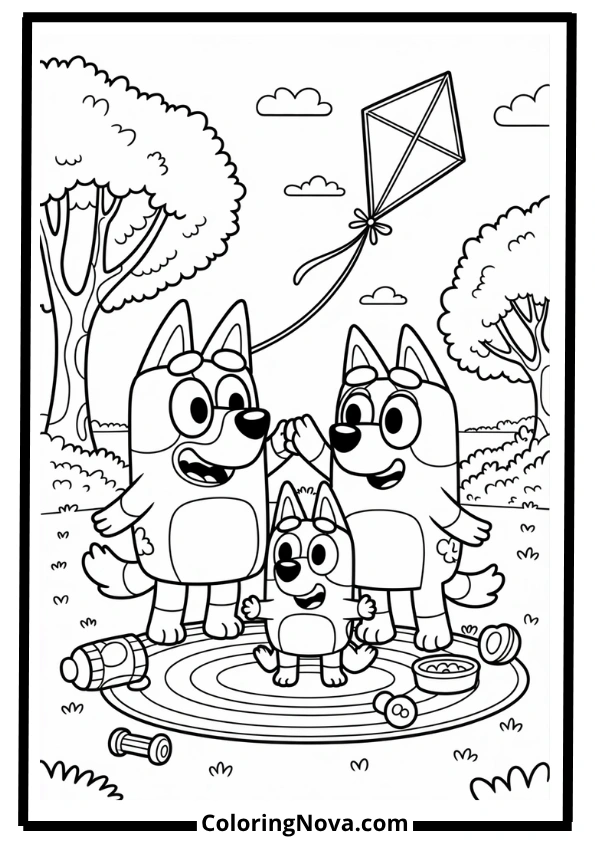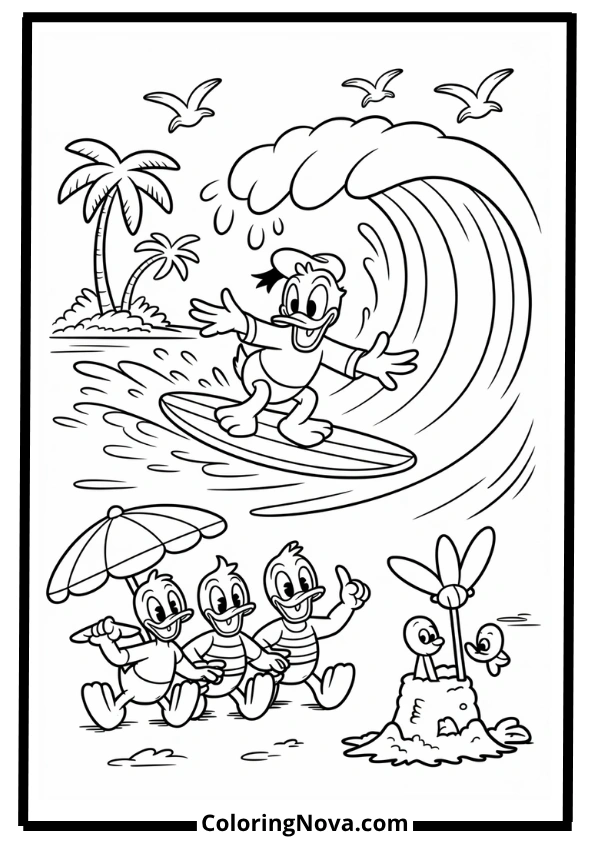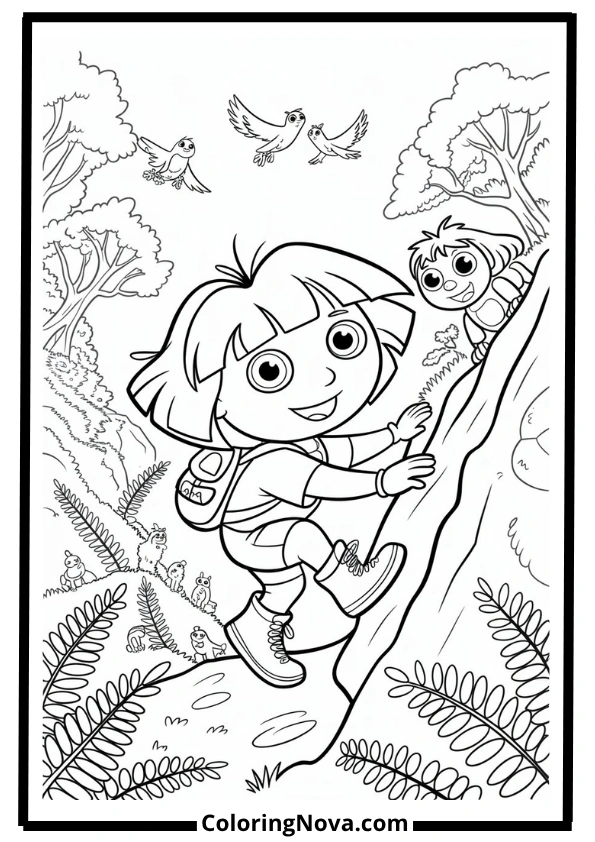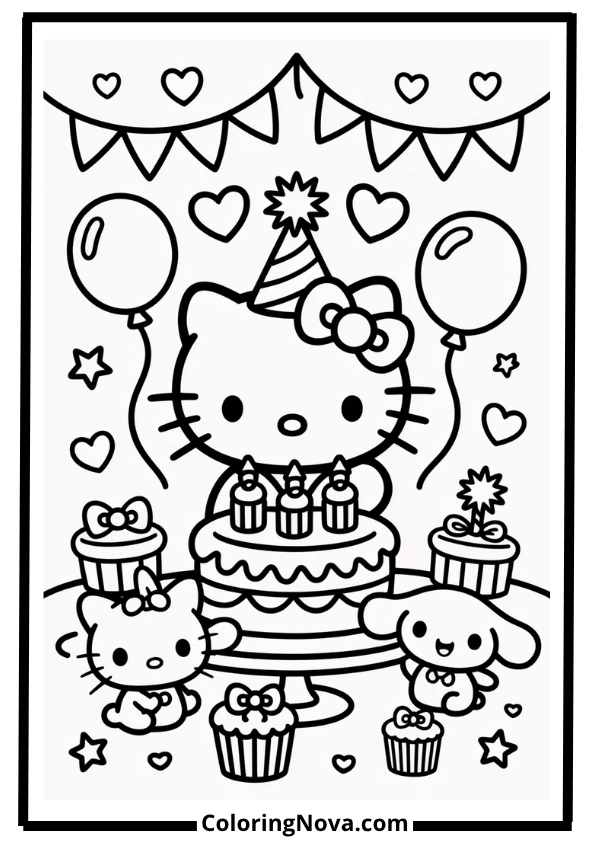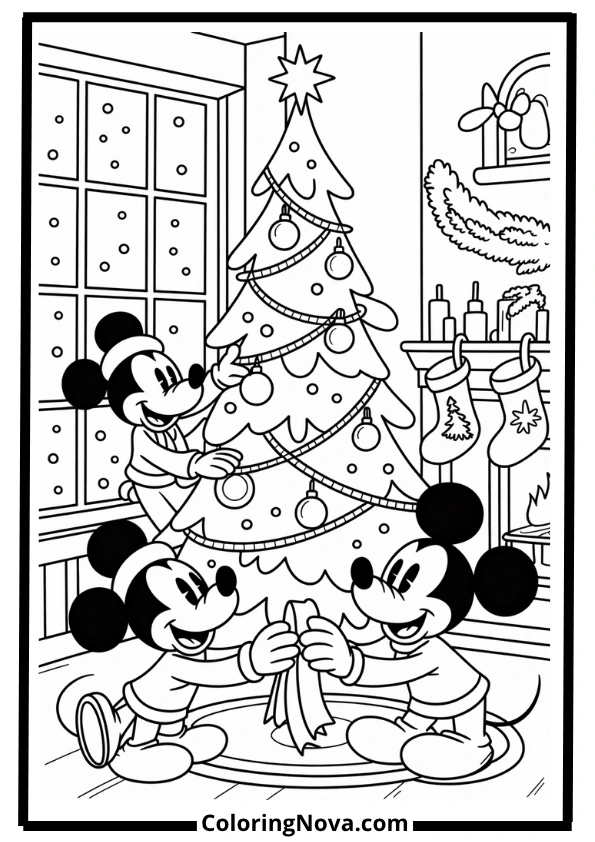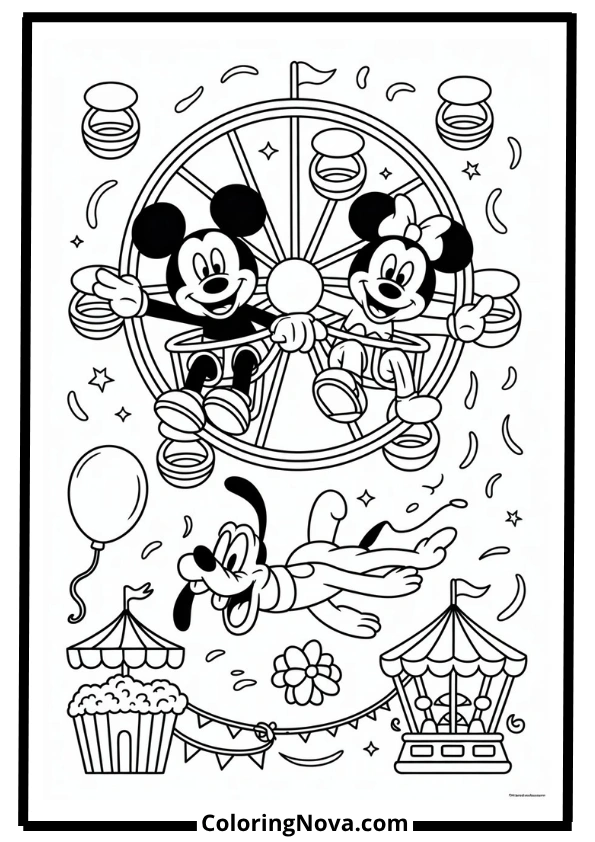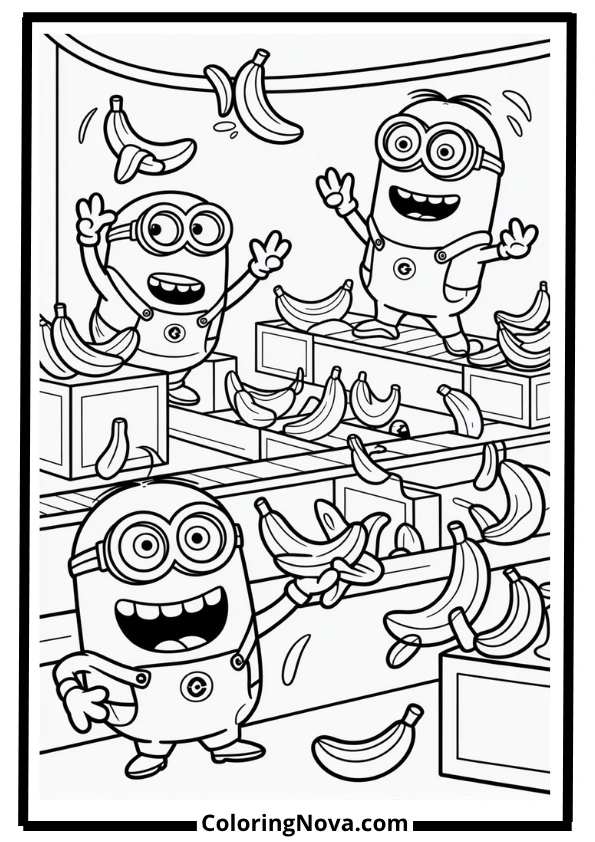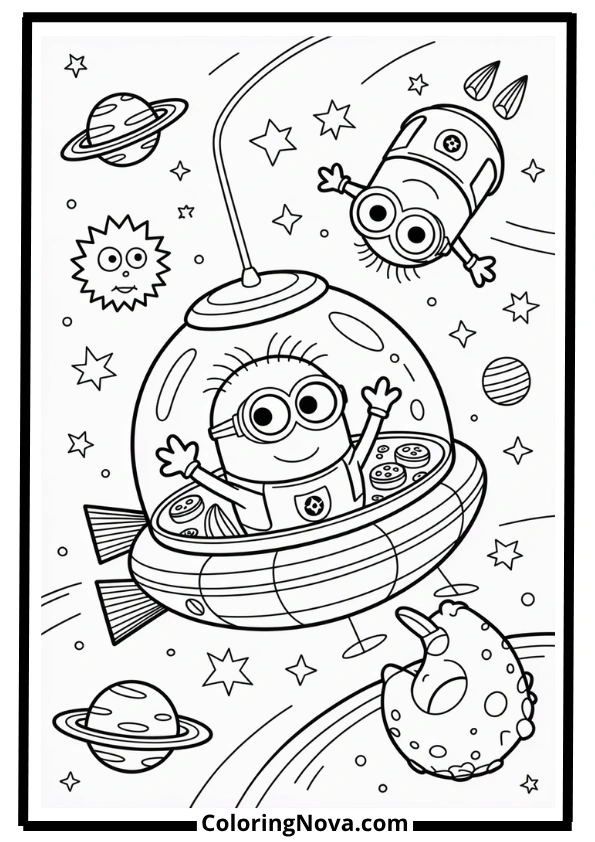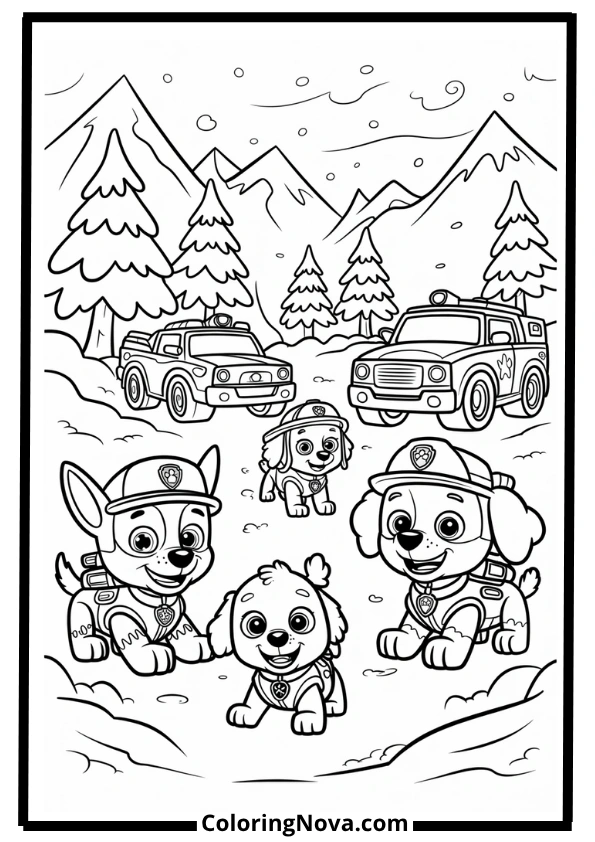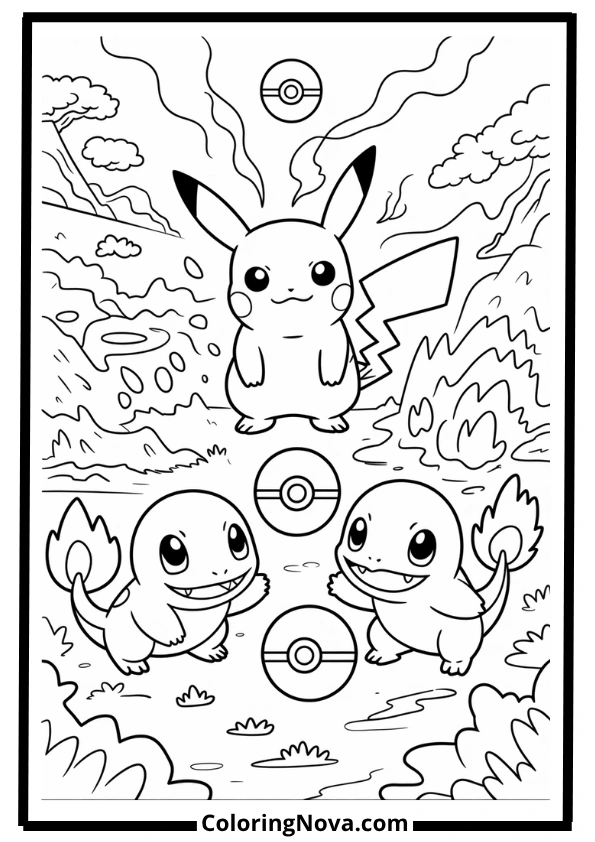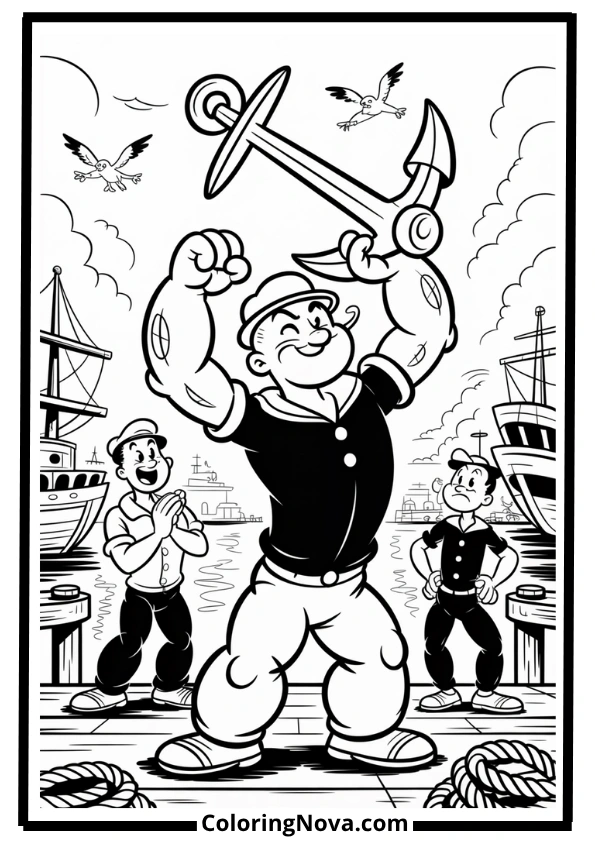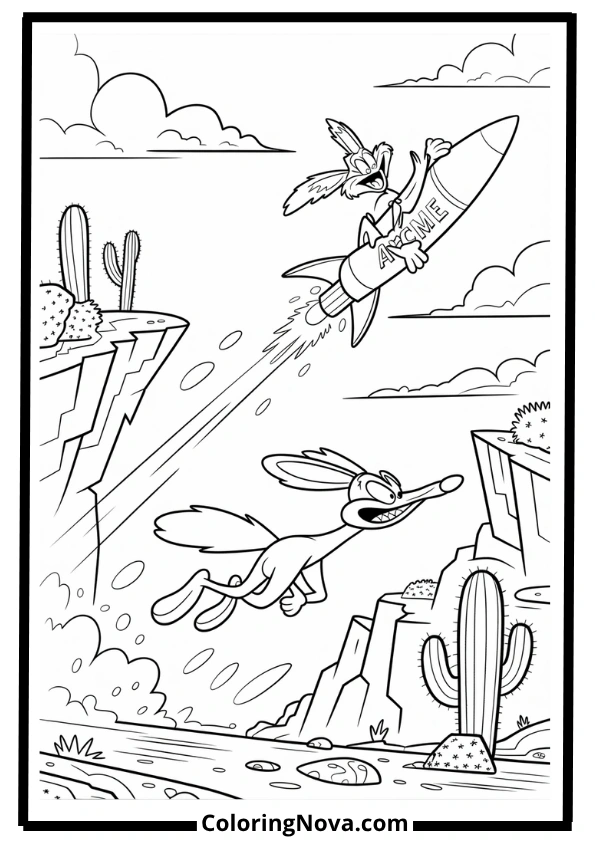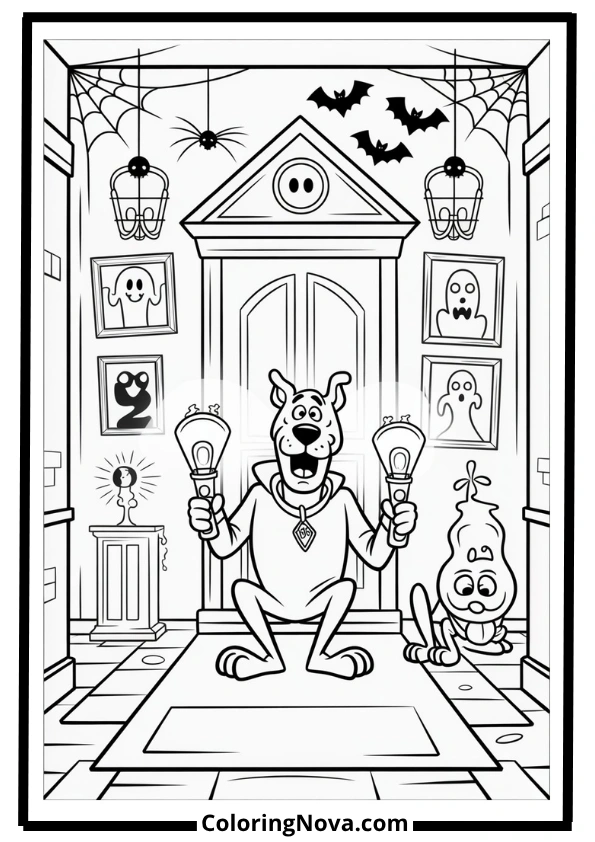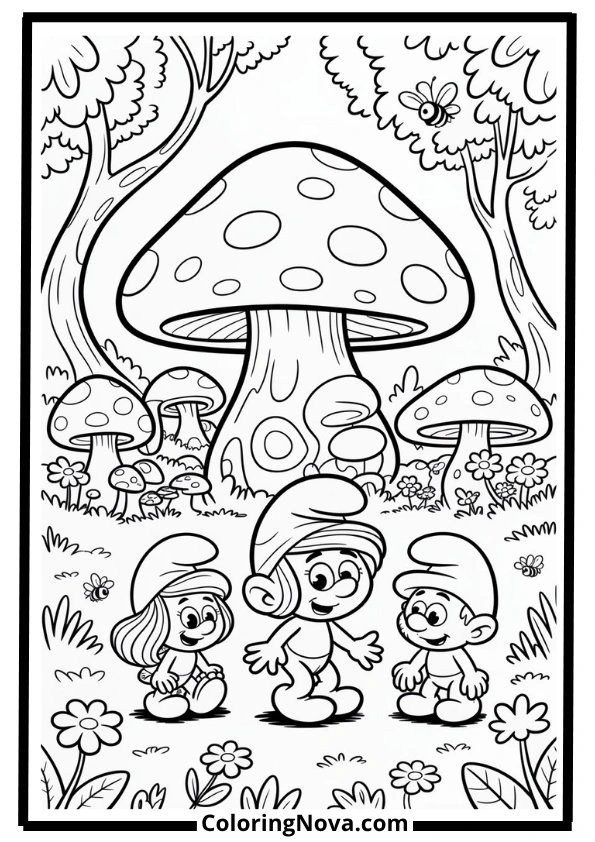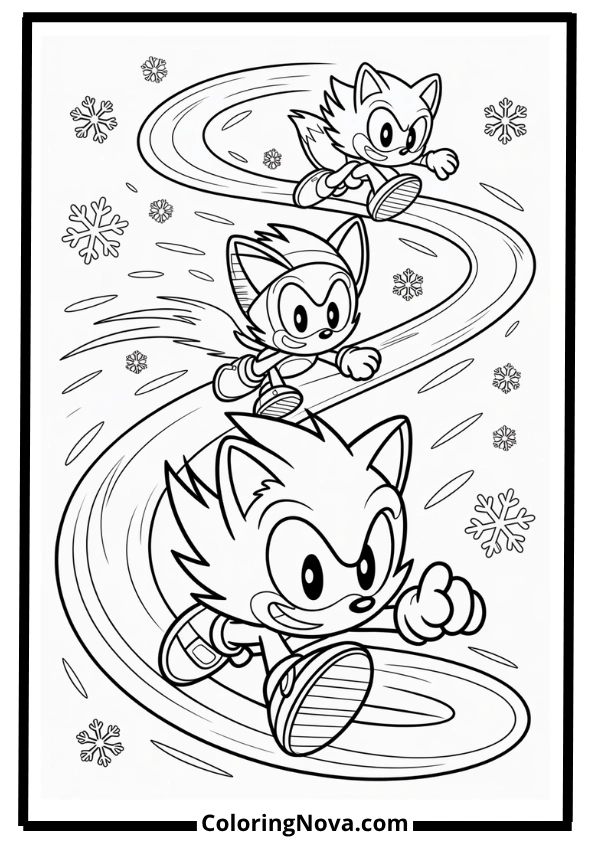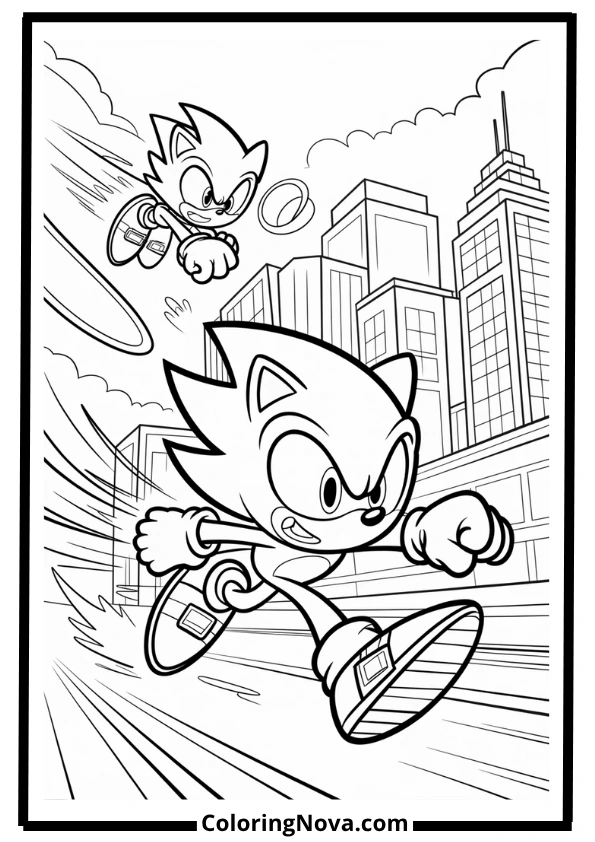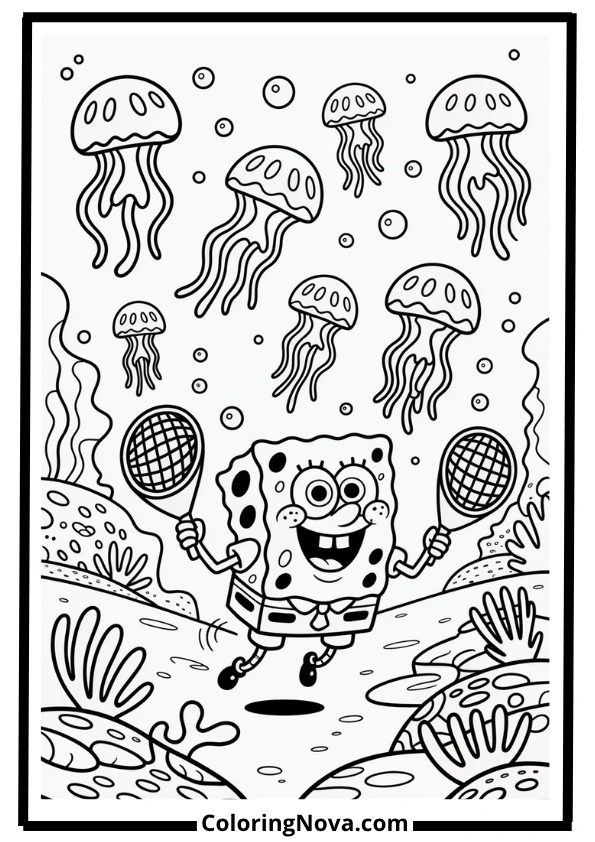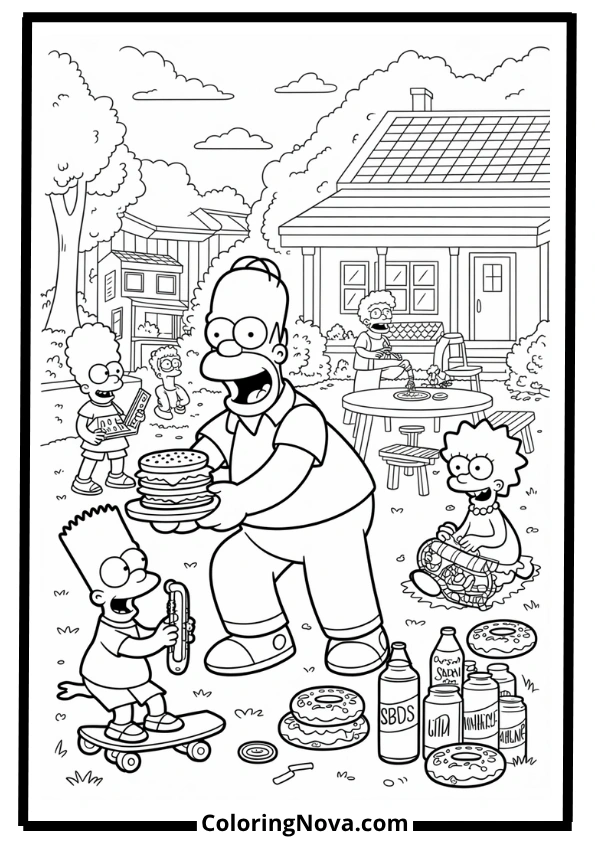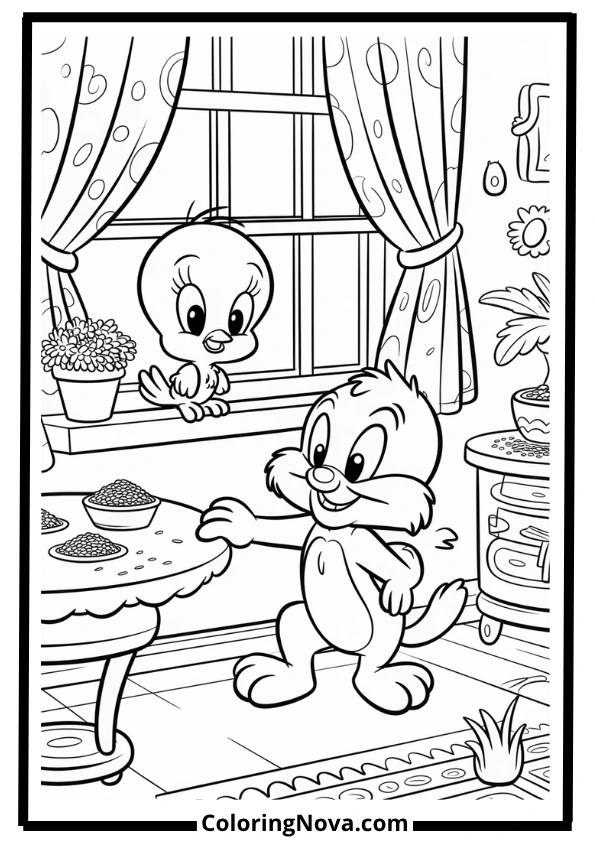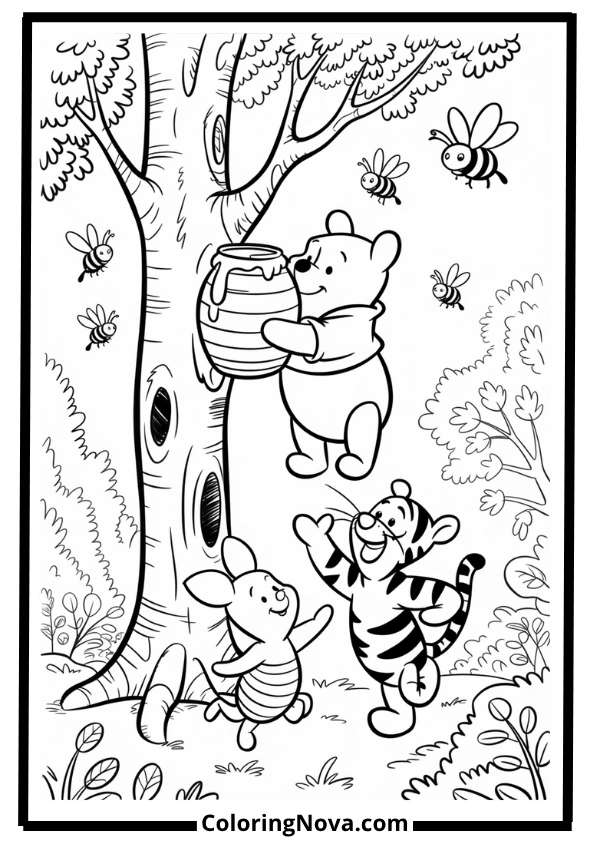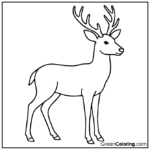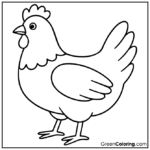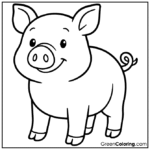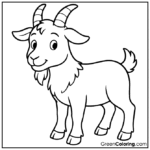We offer a wide collection of free, high-quality printable coloring pages for kids and adults. From cute animals to intricate mandalas, our designs bring creativity and relaxation to everyone. Download, print, and start coloring today!
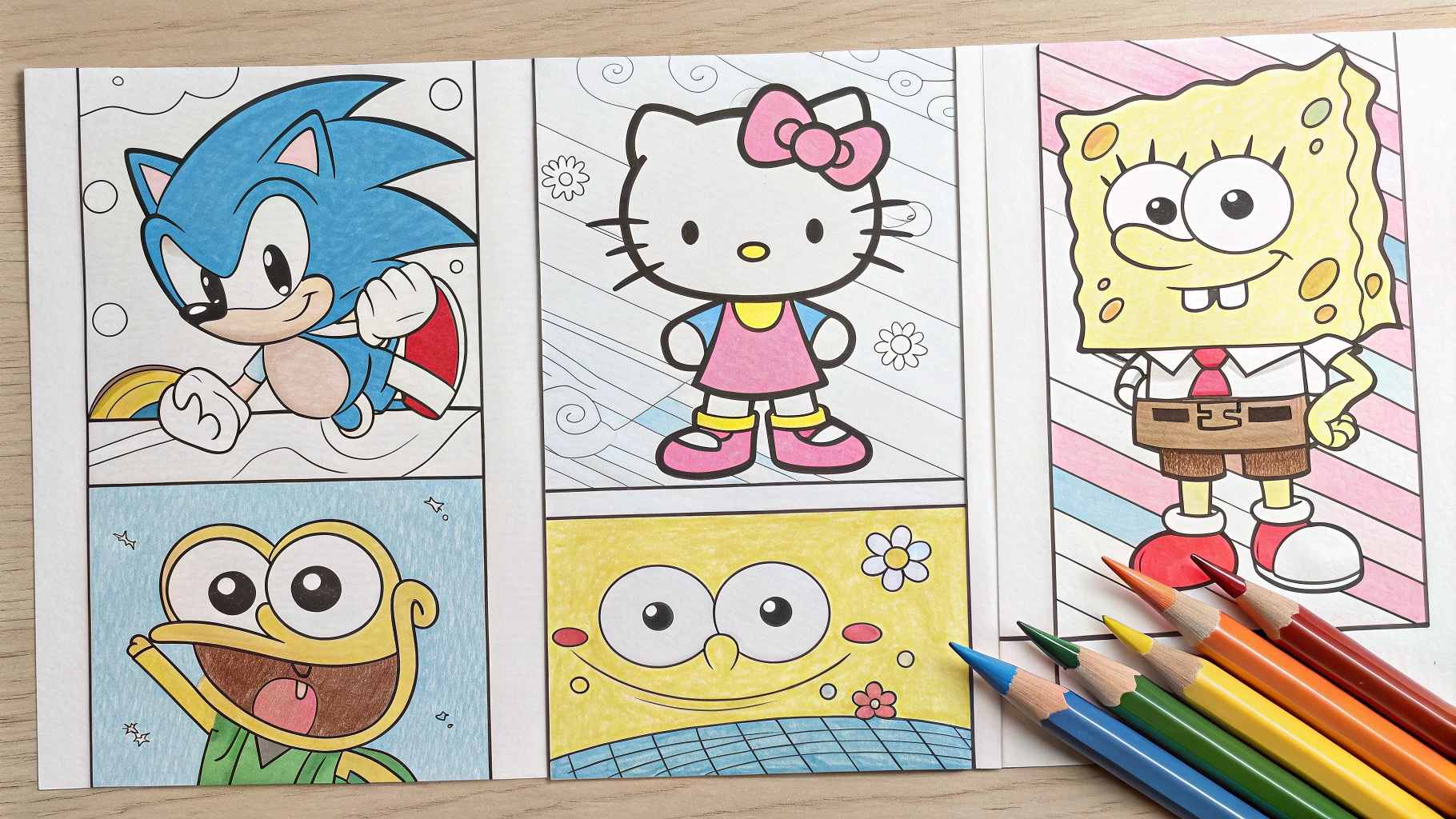
Cartoon Coloring Pages – Dive into the Colorful World of Fun Characters
Remember that magical feeling when you first saw your favorite cartoon character come to life on screen? I’m Clara, and I’ve spent years watching kids (and plenty of adults!) recreate that same magic with crayons, markers, and a whole lot of imagination. There’s something wonderfully satisfying about filling in the bold lines of beloved cartoon characters, whether it’s Mickey Mouse’s iconic ears or SpongeBob’s goofy grin. Cartoon coloring pages have become one of the most popular creative activities for families everywhere, and honestly? I totally get why.
These aren’t just simple drawings on paper. They’re doorways to creativity, learning tools disguised as fun, and sometimes even a ticket back to childhood for grown-ups who need a break from adulting.
To use any of these free printables, simply click on any of the images to open the high-resolution PDF in a new tab. From there, you can download or print as much as you like—totally free!
Each coloring page is designed for standard US letter size but also prints beautifully on A4 paper. Enjoy!
The Magic of Cartoon Coloring Pages
Why cartoon coloring pages are loved by both kids and adults
Let’s be real – cartoons have a special place in our hearts. Whether you grew up watching Saturday morning classics or you’re introducing your kids to today’s animated favorites, these characters feel like old friends. When you sit down with printable cartoon coloring pages, you’re not just filling in blank spaces. You’re interacting with characters that have made you laugh, taught you lessons, and kept you company through countless episodes.
I’ve watched a five-year-old spend an entire afternoon perfecting Bluey’s blue fur, tongue out in concentration. I’ve also seen my friend’s dad – a serious accountant by day – completely absorbed in coloring a detailed Batman scene after dinner. What’s the common thread? These pages tap into something universal: our love for stories and the characters who tell them.
How they bring imagination and favorite shows to life
Here’s where things get really interesting. When kids color their favorite cartoon characters, they’re not passive consumers anymore – they’re active creators. That shift is huge! Suddenly, they’re making artistic decisions. Should Elsa’s dress be the classic ice blue, or maybe purple this time? Can SpongeBob wear a rainbow tie instead of his usual red one?
This creative control lets children (and adults too) rewrite the narrative in small but meaningful ways. They’re engaging with storytelling on a deeper level, making connections between what they see on screen and what they create with their own hands.
The connection between cartoons, storytelling, and creativity
Cartoons are visual stories that use color, movement, and character design to communicate emotions, adventures, and lessons. When someone colors a cartoon page, they’re actually studying these storytelling elements up close. They notice how shadows make characters look three-dimensional and how bright colors convey excitement while softer tones suggest calm moments.
I’ve noticed that kids who regularly work with free cartoon coloring pages start developing a visual vocabulary. They begin understanding that colors carry meaning and that artistic choices affect how we feel about what we’re seeing.
Educational and Creative Benefits
Boosts Creativity and Imagination
The creativity boost goes deeper than you’d think. Sure, picking colors is creative, but the real magic happens when kids start making unconventional choices. A purple Pikachu? Why not! A polka-dotted Hello Kitty? Absolutely!
These “rule-breaking” moments are actually kids testing boundaries and exploring possibilities. They’re learning that creativity isn’t about following instructions perfectly – it’s about expression and experimentation. I’ve seen children who were initially hesitant to “mess up” gradually become more confident in their artistic decisions.
Helps Develop Focus and Patience
In our world of quick notifications and instant entertainment, focusing on one task for an extended period has become surprisingly rare. Coloring cartoon pages offers a gentle antidote to that constant digital stimulation. When a child commits to finishing a detailed coloring page – maybe one featuring all the Paw Patrol pups or a complex Goku action scene – they’re practicing sustained attention.
As the picture starts coming together, something shifts. The child settles in, their breathing slows, and they enter what psychologists call a “flow state.” That’s the sweet spot where time seems to disappear and the activity itself becomes rewarding.
Teaches Kids About Colors and Emotions
Cartoons are masters of emotional communication through color. Think about it – villains often wear dark colors, heroes shine in bright primaries, and sad scenes get muted, cool tones. When children color these characters, they’re unconsciously absorbing these color-emotion connections.
But here’s what I find even cooler: kids also learn to express their own emotions through color choices. A child having a tough day might reach for darker, more intense colors. A kid buzzing with excitement might create the brightest, most rainbow-explosion version of their favorite character you’ve ever seen.
Encourages Artistic Expression and Storytelling
Every colored page tells a story. Maybe it’s the “official” story from the show, or maybe it’s a completely new adventure. I’ve had countless conversations with young artists who explain elaborate scenarios behind their coloring choices. “See, Spider-Man is wearing green here because he’s hiding in the jungle!”
This narrative thinking builds language skills, logical reasoning, and creative writing abilities – all while kids think they’re just having fun with crayons.
Popular Types of Cartoon Coloring Pages
Classic Characters – Mickey Mouse, Donald Duck, and Bugs Bunny
These classic cartoon characters have been making people smile for decades. Cartoon coloring pages featuring Mickey and his friends have this timeless quality that works for multiple generations.
What I love about classic character pages is their versatility. The designs range from super simple (perfect for toddlers just learning to color inside lines) to surprisingly detailed vintage-style illustrations that adults actually enjoy coloring. Donald Duck’s sailor suit offers great practice with primary colors, while Bugs Bunny’s simple gray body with that pop of orange carrot creates nice contrast opportunities.
Superhero Cartoons – Spider-Man, Batman, and Superman
Superhero cartoon coloring pages bring extra excitement because they combine the fun of cartoons with the thrill of heroic adventures. Spider-Man’s web-slinger suit offers interesting pattern work with all those web details. Batman gives colorists the chance to work with dramatic darks and shadows – perfect for developing shading skills.
The best part? These pages often come with action scenes, which means backgrounds, effects, and dynamic poses. That’s a lot more visual interest and keeps the coloring experience engaging for longer periods.
Modern Favorites – Bluey, Paw Patrol, and SpongeBob
These modern cartoon stars dominate playrooms everywhere, so naturally, their coloring pages are super popular too. Free cartoon coloring pages featuring these characters are among the most searched and downloaded options online.
Bluey pages combine simple character designs with emotionally resonant family scenarios. Paw Patrol offers variety since you’re working with multiple pups, each with their own signature color and personality. SpongeBob? Pure joy in coloring form. That bright yellow sponge offers endless creative possibilities, and the underwater setting means you can add bubbles, kelp forests, and colorful fish friends.
Fantasy and Princess Cartoons – Elsa, Ariel, and Moana
These printable cartoon coloring pages feature characters that inspire dreams, bravery, and self-discovery. Modern princess cartoons show diverse, active heroines who solve problems and go on adventures.
Elsa’s ice powers mean you get to play with blues, silvers, and sparkly effects. Ariel’s underwater world introduces ocean colors – teals, aquamarines, coral pinks. Moana brings in tropical warmth with her brown skin, ocean blues, and island greens. Her pages often include cultural patterns and natural elements that introduce children to different art styles.
Animal and Cute Style – Hello Kitty, Winnie the Pooh, and Snoopy
Sometimes you just want adorable, you know? These cute cartoon characters offer a gentler, more relaxed coloring experience. The designs tend to be simpler with larger areas to color, making them perfect for younger children or anyone looking for a soothing, stress-free creative session.
Hello Kitty’s minimalist design is deceptively perfect for teaching design principles. Winnie the Pooh brings cozy, gentle energy to coloring time. His red shirt against his honey-golden fur creates warm, comfortable color harmony. Snoopy offers fun personality moments, capturing character and emotion with minimal lines.
Action and Adventure Cartoons – Mario, Sonic, and Goku
These action-packed cartoon pages appeal especially to kids who love video games, anime, and fast-paced adventures. The designs often feature dynamic poses, movement lines, and exciting backgrounds that make the coloring experience feel more like creating a comic book panel.
Mario and Luigi pages bring video game nostalgia along with bright, primary color schemes. Sonic the Hedgehog’s speedy poses teach young artists about conveying motion in static images. Goku and other anime-style pages introduce slightly more complex illustrations with dramatic expressions and detailed costumes, working great for older kids and teens.
Coloring Tips for Cartoon Artwork
Choose Bright Colors for Vibrant Results
Here’s a secret about cartoons: they thrive on color confidence! Unlike realistic drawings that might use subtle, muted tones, cartoon coloring pages actually look best when you embrace brightness. Don’t be shy with those vivid markers and crayons!
Start with the character’s signature colors as your foundation. Mickey needs those red shorts. SpongeBob needs that sunny yellow. Once you’ve established those recognizable elements, you can get creative with everything else. If you’re using colored pencils, try layering similar bright colors to create depth without losing vibrancy.
Add Simple Shadows for Depth and Style
Want to know what separates okay coloring from “wow, did you do that?” coloring? Shadows! Even simple ones make a huge difference. And yes, even young children can learn basic shading that transforms their cartoon coloring pages.
Start simple. Identify where the light would naturally come from – usually top-left corner is a safe default. Then, take a slightly darker version of your base color and gently add color to the opposite side. Under Batman’s chin, along the bottom edge of characters, inside curve areas – just a little bit of darker color there creates dimension.
Blend Colors Smoothly for a Polished Look
Blending takes your coloring game to the next level. When coloring larger areas like Elsa’s dress or Superman’s cape, start with your lightest shade at one end and gradually press harder (if using pencils) or add a darker shade as you move across the space. That gradient effect looks gorgeous and adds sophistication.
My favorite blending tool for cartoon coloring pages? Colored pencils with a blending stump or even just a tissue. Color your section, then gently rub the surface in circular motions. The pigment blends together, creating that polished, finished look.
Experiment with Backgrounds and Patterns
Many cartoon coloring pages come with blank or minimal backgrounds, which is actually a creative opportunity in disguise. This empty space is your chance to add environmental storytelling and extra visual interest.
Think about where your character might be. Is Paw Patrol’s Chase on a rescue mission? Maybe add a cityscape behind him. Patterns are another game-changer. Try adding polka dots to backgrounds, stripes to clothing, or stars scattered through the sky. The contrast makes the character pop while showing off creative confidence.
Emotional and Educational Value
Cartoon coloring pages promote confidence through creative achievement. There’s something incredibly powerful about finishing a coloring page. Kids beam with pride as they hold up their completed artwork. That sense of accomplishment matters more than we might initially think, especially for children who struggle with confidence in other areas.
These activities strengthen understanding of visual storytelling. As children color, they start recognizing visual patterns: hero characters often have open, friendly poses while villains might be hunched or angular. These observations build visual analytical skills that apply to understanding picture books, recognizing media messages, and appreciating art.
Coloring encourages screen-free, mindful activities. It requires present-moment attention and gives developing brains a break from the rapid input-switching that screen time often requires. Kids who regularly engage in coloring tend to be better at self-soothing and managing overwhelming emotions.
Finally, free cartoon coloring pages build bonds when shared as family art projects. Some of my favorite coloring memories are about sitting around the kitchen table with family, everyone working on their own pages, chatting and sharing supplies. These shared creative experiences build memories and strengthen relationships.
Who Enjoys Cartoon Coloring Pages?
Children are the primary audience, learning art and expression through fun characters. Younger children (ages 3-6) benefit from motor skill development and color recognition. Older children (ages 7-12) use cartoon coloring pages to develop more sophisticated artistic techniques and personal expression.
Teens explore nostalgia and creativity through characters from shows they watched as younger kids. Teen coloring sessions often become more artistic and experimental, serving as a stress-management tool that doesn’t involve social media.
Adults use cartoons for mindfulness and relaxation. After a stressful workday, settling in with markers and a Winnie the Pooh page creates a mental shift into a simpler, gentler mindset. Many adults keep printable cartoon coloring pages at their desks, taking “coloring breaks” instead of scrolling social media.
Teachers and Parents incorporate coloring into educational play. Teachers use character-themed coloring to reinforce lessons, while parents appreciate the versatility for quiet time, travel entertainment, or rainy day activities.
FAQs – Cartoon Coloring Pages
What makes cartoon coloring pages so enjoyable?
The magic is in the combination of familiarity and creativity. You’re working with characters you already know and love, which removes the intimidation of starting from scratch, but you still get to make creative decisions that make the artwork uniquely yours. It’s structured freedom – enough guidance to feel comfortable, enough choice to feel creative.
Are they suitable for all ages?
Absolutely! That’s one of the beautiful things about cartoon coloring pages – they scale beautifully across age groups. Toddlers can work on simple designs featuring characters like Elmo. School-age kids enjoy more detailed pages with their current favorites. Teens and adults gravitate toward intricate designs or nostalgic characters from their childhoods.
How can coloring cartoon pages help kids learn?
Beyond fine motor skill development and color recognition, cartoon coloring teaches pattern recognition, planning, focus, and patience. It builds pre-writing skills through grip practice and hand strengthening. Kids also develop visual-spatial skills and emotional expression through color choices.
What colors are best for cartoon characters?
Start with their signature colors to keep them recognizable – SpongeBob needs yellow, Mickey needs red and black. But once you’ve established the basics, feel free to experiment. Try complementary color schemes or completely wild creative choices. The best colors are whatever bring you joy!
Can adults enjoy cartoon coloring too?
One hundred percent yes! Adult coloring has become a recognized stress-relief activity, and cartoon characters add the extra benefit of nostalgia and playfulness. Many adults find that coloring childhood favorites helps them reconnect with simpler times and take life less seriously for a while.
Conclusion
Here’s what I’ve learned through years of watching people of all ages interact with cartoon coloring pages: this simple activity creates genuine magic. Cartoon coloring pages serve as a bridge between entertainment and education, between structured activity and free expression, between childhood nostalgia and present-moment mindfulness.
Whether you’re a parent looking for quality activities that don’t involve screens, a teacher seeking engaging ways to develop student skills, or just someone who lights up at the sight of your favorite cartoon characters, cartoon coloring pages offer something valuable. They prove that not every meaningful activity needs to be complicated or expensive – sometimes all you need is paper, coloring tools, and beloved cartoon coloring pages featuring characters waiting to come to life through your creative choices.
The next time you’re looking for an activity that’s simultaneously calming and engaging, educational and fun, grab some printable cartoon coloring pages and see where your creativity takes you. Cartoon coloring pages might surprise you with what you create – and what you discover about yourself along the way. Happy coloring, friends!

